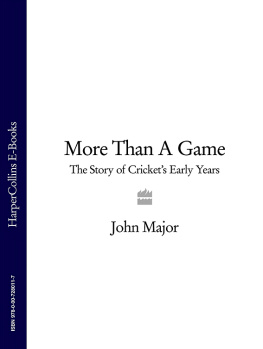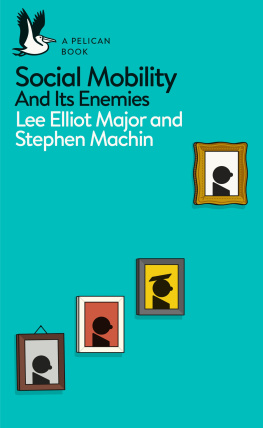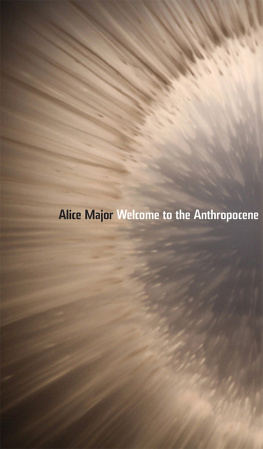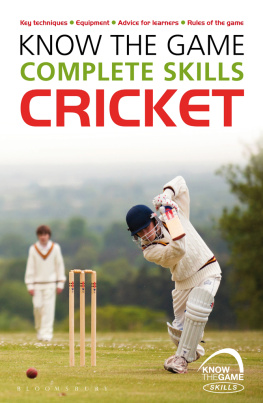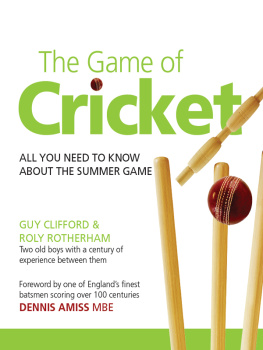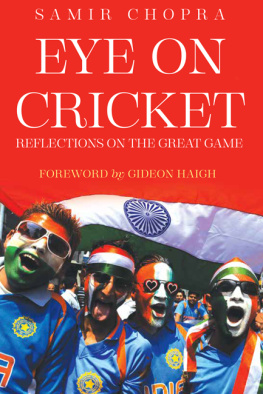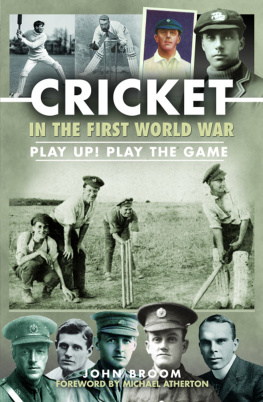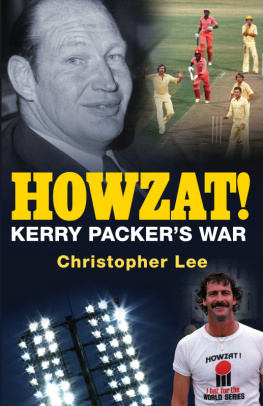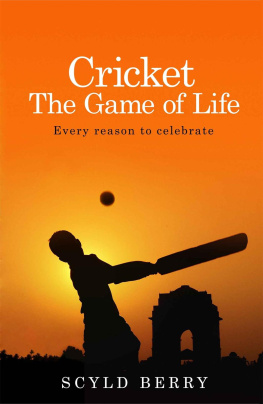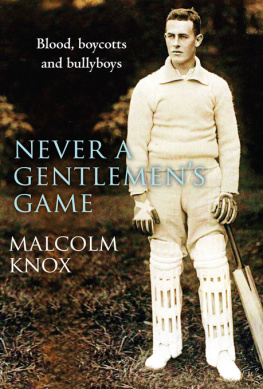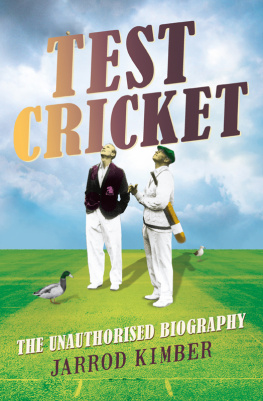Charles Lennox, second Duke of Richmond, a keen gambler with a lifelong love of cricket. Mezzotint by John Faber Jr, after John Vanderbank. (Courtesy National Portrait Gallery, London)
Sir William Gage, whose estate Firle in East Sussex was one of the cradles of eighteenth-century cricket. (Courtesy of the Firle EstateTrustees)
Cricket being played in 1743 at the Artillery Ground in Finsbury, London. (The Roger Mann Collection)
Lionel Sackville, first Duke of Dorset, one of the great early patrons of the game. Portrait by Sir Godfrey Kneller, 1717. (Private Collection,NTPL/John Hammond)
Charles Sackville, second Duke of Dorset. Portrait by Rosalba Carriera. (Private Collection, NTPL/John Hammond)
Frederick Louis, Prince of Wales, an enthusiastic early patron of cricket. Portrait miniature by Gaetano Manini, 1755. ( AshmoleanMuseum, University of Oxford/The Bridgeman Art Library)
The Duke of Cumberland, a better judge of a soldier than a cricketer. Portrait by David Morier. ( Private Collection/Philip Mould Ltd/TheBridgeman Art Library)
A match at Moulsey Hurst, on the banks of the river Mole in Surrey. (The Roger Mann Collection)
Lumpy Stevens, the most deadly underarm bowler of his day. (TheRoger Mann Collection)
Sir Horace Mann, the most amiable of crickets early benefactors. (TheRoger Mann Collection)
John Frederick Sackville, third Duke of Dorset, the third in a line of great cricketing patrons. Portrait by Sir Joshua Reynolds, 1769. (Private Collection, NTPL/John Hammond)
The Countess of Derby plays cricket with other ladies at The Oaks, in Surrey, in 1779. (The Roger Mann Collection)
John Nyren, whose memories of Hambledon have given us a vivid picture of early cricket. (The Roger Mann Collection)
An eighteenth-century cricket match, possibly at Hambledon. (TheRoger Mann Collection)
A page from a sketchbook by George Shepheard, showing some of the Hambledon cricketers. (The Roger Mann Collection)
The Bat and Ball Inn on Broadhalfpenny Down, Hambledon. (TheRoger Mann Collection)
Silver Billy Beldam joined the Hambledon club in 1785, and lifted the art of batting to a new level of style and elegance. (The Roger MannCollection)
Lord Winchilsea, a key founder of the MCC who encouraged Thomas Lord to acquire its first ground. (The Roger Mann Collection)
Cricket Played by the Gentlemens Club, White Conduit House, Islington in 1784. (The Roger Mann Collection)
An engraving, after Thomas Rowlandson, depicting a match between the ladies of Hampshire and Surrey at Newington in 1811. (The RogerMann Collection)
The canny Yorkshireman Thomas Lord, who left the worlds most famous cricket ground as his memorial. (The Roger Mann Collection)
William Ward, a central figure in securing Lords place as the headquarters of cricket. (The Roger Mann Collection)
Benjamin Aislabie, first Secretary of the MCC. (The Roger MannCollection)
Lord Frederick Beauclerk: avaricious, ill-tempered, hypocritical, and adept at bending the rules. (The Roger Mann Collection)
Fuller Pilch, the finest batsman of his day, and single-wicket champion of England. (The Roger Mann Collection)
John Wisden, the founder of the Almanack and a fast round-arm bowler. (The Roger Mann Collection)
The Scorer, by Thomas Henwood (1842). (The Roger Mann Collection)
Alfred Mynn and Nicholas Felix before their famous single-wicket contest in 1846 for the title champion of England. (The Roger MannCollection)
William Clarke, the finest underarm bowler of them all, and the founder of Trent Bridge cricket ground. (The Roger Mann Collection)
Clarkes All-England Eleven of 1847. (The Roger Mann Collection) The All-England Eleven on the move in 1851, by Nicholas Felix. (TheRoger Mann Collection)
George Parr, who succeeded Clarke as leader of Nottinghamshire and the All-England Eleven. (The Roger Mann Collection)
The first English overseas touring team. George Parrs men gather on deck before their 1859 voyage to North America. (The Roger MannCollection)
H.H. Stephensons English team arrives in Melbourne on Christmas Eve 1861. (The Roger Mann Collection)
Tom Hayward and Robert Carpenter, two fine Cambridgeshire batsmen of the 1860s. (The Roger Mann Collection)
Arthur Haygarth, whose Cricket Scores and Biographies is the bedrock of our knowledge of the years 1744 to 1878. (The Roger MannCollection)
The 1880 Australians, the first visitors to play a Test match in England. (The Roger Mann Collection)
Charles Alcock, whose immense backstage contribution to cricket warrants a higher place in the mythology of the game than history has yet given him. (The Roger Mann Collection)
Alfred Shaw, who bowled the first over in Test cricket. (The RogerMann Collection)
Edward Mills Grace, W.G.s elder brother and one of the most formidable cricketers of his day. (The Roger Mann Collection)
W.G. Grace poses with Harry Jupp of Surrey. (The Roger MannCollection)
Three of the remarkable Studd brothers, two of whom played Test cricket for England. (The Roger Mann Collection)
The Demon Frederick Spofforth, the first of the great Australian bowlers. (The Roger Mann Collection)
The Hon. Ivo Bligh led the English team which recovered the Ashes in Australia in 188283. (The Roger Mann Collection)
Lord Harris batting at Lords for the Lords and Commons Eleven against the touring Canadians in 1922. (The Roger Mann Collection)
The Ideal Cricket Match, by Sir Robert Ponsonby Staples (1887). (TheRoger Mann Collection)
A.S. Wortleys portrait of W.G. Grace. (The Roger Mann Collection)
The Surrey batsman W. E. Roller on his way to bat at The Oval, painted by his brother George in 1883. (Reproduced by kindpermission of Surrey County Cricket Club. The Oval CricketGround/Wingfield Sporting Gallery/The Bridgeman Art Library)
The noted stonewaller William Scotton. (The Roger Mann Collection)
The formidable Lord Hawke, while captain of Yorkshire. (The RogerMann Collection)
Arthur Shrewsbury, one of the greatest batsmen in Victorian England. (The Roger Mann Collection)
Gentlemen vs Players at Lords (1895). (The Roger Mann Collection)
Albert Trott, the only man to have hit a ball over the pavilion at Lords. (The Roger Mann Collection)
Ranjitsinhji enchanted spectators with his wristy technique, and his torrent of runs for Sussex and England. (The Roger Mann Collection)
Stanley Jackson, the first man to score five centuries against Australia in England. (The Roger Mann Collection)
The mightiest of all of crickets great entertainers, Gilbert the Croucher Jessop. (The Roger Mann Collection)
Victor Trumper: the majesty of his batting left spectators awe-struck. (The Roger Mann Collection)
William Murdoch, C.B. Fry and W.G. Grace at Crystal Palace in 1901. (The Roger Mann Collection)
Kent vs Lancashire at Canterbury by Albert Chevallier Tayler (1906). (The Roger Mann Collection)
Sydney Barnes, regarded by many as the finest bowler of all. (TheRoger Mann Collection)

